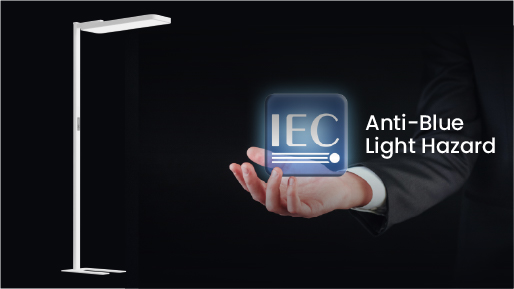Floor lamps are a staple in interior lighting, offering both functional and aesthetic benefits. When equipped with a dimmer, they transcend the ordinary, providing an extra layer of versatility that can transform the mood and usability of any space. A dimmer - equipped floor lamp allows users to adjust the light intensity according to their specific needs, whether it's creating a bright, focused work environment or a soft, relaxing atmosphere for winding down. This adaptability makes them suitable for a wide range of settings, from residential homes to commercial establishments.
The Mechanics of Dimmer - Equipped Floor Lamps
Types of Dimmers
1. Rotary Dimmers
Rotary dimmers are one of the simplest and most common types found in floor lamps. They feature a knob that, when turned, adjusts the light intensity in a smooth, continuous manner. As the user rotates the knob clockwise or counter - clockwise, the electrical current flowing through the lamp is gradually increased or decreased. This type of dimmer is easy to operate and provides a tactile experience, allowing for precise control over the light level. For example, in a reading nook, a rotary - dimmer - equipped floor lamp enables the user to find the perfect brightness for reading a book, whether it's a bright light for detailed reading or a softer glow for casual browsing.
2. Slide Dimmers
Slide dimmers operate on a different principle. They have a slider mechanism that, when moved up or down, changes the resistance in the electrical circuit, thereby controlling the amount of current reaching the lamp. Slide dimmers offer a more linear adjustment compared to rotary dimmers. They are often preferred in modern - style floor lamps due to their sleek and minimalist design. In a contemporary living room, a floor lamp with a slide dimmer can be easily adjusted to create different lighting scenes. For instance, during a movie night, the slider can be moved down to create a dim, cinema - like atmosphere, while during a daytime gathering, it can be slid up to provide bright, general illumination.
3. Touch - Sensitive Dimmers
Touch - sensitive dimmers are a more advanced and user - friendly option. These dimmers respond to the user's touch, usually on a designated area of the lamp base or stem. A simple tap or a long - press can increase or decrease the light intensity. Some touch - sensitive dimmers also have memory functions, which means they can recall the last - used light setting. This is particularly convenient in bedrooms, where a floor lamp with a touch - sensitive dimmer can be easily adjusted in the dark. The user can quickly find the right light level for getting up in the middle of the night without having to fumble for a traditional switch or knob.
Compatibility with Different Light Sources
1. Incandescent Bulbs
Incandescent bulbs have been a traditional choice for floor lamps. They produce a warm, inviting light that is well - suited for creating a cozy atmosphere. When used with a dimmer, incandescent bulbs can be dimmed smoothly over a wide range of intensities. However, they are relatively energy - inefficient compared to newer lighting technologies. As the bulb is dimmed, the filament temperature decreases, which not only reduces the light output but also extends the bulb's lifespan. In a traditional - style living room, an incandescent - lit floor lamp with a dimmer can be adjusted to match the mood of the occasion, from a bright light for entertaining guests to a soft glow for a quiet evening.
2. Compact Fluorescent Lamps (CFLs)
CFLs are more energy - efficient than incandescent bulbs. However, not all CFLs are compatible with dimmers. Special dimmable CFLs are designed to work with dimmers, but they may have some limitations. When dimmed, CFLs may take a short time to adjust to the new light level, and they may not be able to achieve as low a light intensity as incandescent bulbs. In a home office, a CFL - lit floor lamp with a dimmer can be used to provide sufficient task lighting during the day and a softer, more ambient light in the evening. But users need to ensure that the CFL and the dimmer are properly matched for optimal performance.
3. Light - Emitting Diodes (LEDs)
LEDs have become increasingly popular in floor lamps due to their energy efficiency, long lifespan, and versatility. LED - compatible dimmers allow for precise control over the light intensity, color temperature (in some cases), and even the color of the light (in RGB - enabled LEDs). LED - lit floor lamps with dimmers can be adjusted to create a wide range of lighting effects. For example, in a modern - style bedroom, an LED floor lamp with a dimmer and color - changing capabilities can be set to a soft, warm - white light for relaxation or switched to a brighter, cool - white light for getting ready in the morning.
Design and Aesthetic Considerations
Styles of Floor Lamps with Dimmers
1. Traditional Styles
Traditional floor lamps with dimmers often feature classic designs inspired by historical periods. The bases may be made of materials such as brass, bronze, or wood, with intricate carvings or detailed finishes. For example, a Victorian - style floor lamp might have a brass base with floral motifs and a fabric shade. The dimmer, whether it's a rotary or a more concealed touch - sensitive one, is integrated in a way that does not disrupt the overall aesthetic. In a formal living room decorated in a traditional style, such a floor lamp can be adjusted to provide the right amount of light for different activities, from reading a book by the fireplace to hosting a small gathering.
2. Modern and Contemporary Styles
Modern and contemporary floor lamps with dimmers embrace sleek, minimalist designs. They typically use materials like aluminum, stainless steel, and high - tech plastics. Geometric shapes are common, with straight lines, sharp angles, and unique forms. The dimmer is often incorporated in a way that complements the lamp's modern look. For instance, a floor lamp with a cylindrical metal base and a frosted glass shade may have a touch - sensitive dimmer integrated into the base, providing a seamless and stylish way to control the light. In a contemporary office space, such a lamp can be adjusted to suit different work requirements, from bright task lighting to a more subdued ambient light for meetings.
3. Industrial Styles
Industrial - style floor lamps with dimmers are characterized by their rugged, utilitarian look. They often feature exposed bulbs, metal cages, and distressed finishes. The dimmers in these lamps can add to their functionality without sacrificing the industrial aesthetic. A floor lamp with a metal pipe base and an exposed Edison - style bulb, equipped with a rotary dimmer, can be a focal point in a loft - style living room. The dimmer allows users to adjust the light to create a moody, industrial - chic atmosphere, whether it's for a relaxed evening at home or a more lively get - together.
Placement and Impact on Room Decor
1. Living Room
In the living room, a floor lamp with a dimmer can be placed in various locations to enhance the decor and functionality. Placed next to a sofa or an armchair, it provides reading light that can be adjusted according to the user's needs. If the living room has a focal point like a fireplace or a piece of art, a floor lamp with a dimmer can be used to highlight it. By dimming the light, the lamp can create a cozy and intimate atmosphere for conversations or movie nights. In a large living room, multiple floor lamps with dimmers can be used to create different zones, each with its own lighting level and mood.
2. Bedroom
In the bedroom, a floor lamp with a dimmer can be a great addition. Placed next to the bed, it can serve as an alternative to a bedside table lamp. The dimmer allows the user to adjust the light for reading before sleep or for getting up in the middle of the night without being too harsh on the eyes. A floor lamp with a soft - diffusing shade and a dimmer can create a relaxing and peaceful atmosphere, promoting better sleep. It can also be used to add a decorative touch to the bedroom, especially if it has an interesting design.
3. Home Office
For a home office, a floor lamp with a dimmer can be a valuable asset. Placed next to the desk, it provides task lighting that can be adjusted depending on the type of work being done. During the day, the light can be set to a bright level for detailed tasks such as reading documents or using a computer. In the evening, when the ambient light in the room has decreased, the dimmer can be used to reduce the light intensity to a more comfortable level, preventing eye strain. A well - designed floor lamp with a dimmer can also add a touch of style to the home office, making it a more pleasant and productive space.
Energy Efficiency and Cost - Savings with Dimmer - Equipped Floor Lamps
Reducing Energy Consumption
1. Lower Wattage at Reduced Light Levels
When a floor lamp is dimmed, the amount of power consumed by the light source decreases. For example, an incandescent bulb that typically operates at 100 watts at full brightness may consume only 25 watts when dimmed to a low level. This reduction in power consumption not only saves energy but also lowers the electricity bill. In a household where multiple floor lamps with dimmers are used, the cumulative energy savings can be significant over time.
2. Extending the Lifespan of Light Bulbs
Dimming also extends the lifespan of light bulbs. When a bulb is operated at a lower voltage (which is what happens when it is dimmed), the filament in an incandescent bulb or the components in an LED or CFL bulb experience less stress. This results in a longer - lasting bulb. For instance, an incandescent bulb that may last 1000 hours at full brightness can last up to 2000 hours or more when dimmed for a significant portion of its use. This means fewer bulb replacements, which is not only more convenient but also reduces waste and further saves money.
Cost - Savings in the Long Run
1. Lower Electricity Bills
The reduced energy consumption directly translates into lower electricity bills. Over the course of a year, the savings from using dimmer - equipped floor lamps can amount to a substantial sum, especially in households or commercial spaces where the lamps are used frequently. In a small office with several floor lamps, the monthly savings on electricity can be used to invest in other office supplies or improvements.
2. Fewer Bulb Replacements
As mentioned earlier, the extended lifespan of bulbs due to dimming means fewer replacements. This saves money on the cost of purchasing new bulbs. In a large hotel lobby with multiple floor lamps, the cost savings from reduced bulb replacements can be significant over time. Additionally, the labor cost associated with replacing bulbs is also reduced, further contributing to the overall cost - savings.
Maintenance and Troubleshooting of Floor Lamps with Dimmers
Regular Cleaning and Bulb Replacement
1. Cleaning the Lamp
Regular cleaning is essential to keep a floor lamp with a dimmer in good condition. The shade, whether it's made of fabric, glass, or other materials, should be dusted regularly to prevent the build - up of dirt, which can affect the light output. For fabric shades, a gentle brush or a vacuum cleaner with a soft brush attachment can be used. The base of the lamp, especially if it's made of metal, should be wiped clean to prevent rust or tarnishing. In a high - traffic area like a living room, a floor lamp may need to be cleaned once a week to keep it looking its best.
2. Bulb Replacement
When it comes to bulb replacement, it's important to choose the right type of bulb that is compatible with the dimmer. As mentioned earlier, not all bulbs are suitable for dimming. Incandescent bulbs are generally easy to replace, but users should ensure they use the correct wattage. LED and CFL bulbs, on the other hand, require more care. When replacing an LED bulb in a dimmer - equipped floor lamp, it's crucial to select a dimmable LED bulb. The process of replacing the bulb is usually straightforward, but users should always turn off the lamp and allow it to cool down before attempting to change the bulb.
Troubleshooting Common Issues
1. Dimmer Not Working Properly
If the dimmer on a floor lamp is not working properly, there could be several reasons. One common issue is a loose connection. The wires connecting the dimmer to the lamp and the power source should be checked for any signs of looseness. In some cases, the dimmer switch itself may be faulty and need to be replaced. Another possibility is that the bulb is not compatible with the dimmer. If a non - dimmable bulb is used in a lamp with a dimmer, it may not respond to the dimmer's adjustments.
2. Flickering Light
A flickering light in a floor lamp with a dimmer can be caused by a variety of factors. It could be due to a loose bulb, a problem with the dimmer's electrical contacts, or a voltage issue. If the bulb is loose, simply tightening it may solve the problem. If the issue persists, the dimmer's contacts may need to be cleaned or replaced. In some cases, if the electrical wiring in the area has a voltage fluctuation problem, it can also cause the light to flicker. In such situations, it may be necessary to consult an electrician to diagnose and fix the underlying electrical issue.
Future Trends in Floor Lamps with Dimmers
Smart Home Integration
1. Wi - Fi and Bluetooth Connectivity
In the future, floor lamps with dimmers are likely to be increasingly integrated into smart home systems. Wi - Fi and Bluetooth connectivity will allow users to control the lamp's brightness, color temperature (in the case of LED - based lamps), and even set schedules using a smartphone app. For example, a user could program the floor lamp to gradually increase in brightness in the morning to act as a natural wake - up light or to dim automatically in the evening to create a relaxing atmosphere. This level of control provides added convenience and enhances the overall user experience.
2. Voice Control
Voice - controlled floor lamps with dimmers are also on the horizon. With the prevalence of virtual assistants like Amazon Alexa, Google Assistant, and Apple Siri, users will be able to adjust the light intensity of their floor lamps simply by using voice commands. This hands - free operation is particularly useful in situations where the user's hands are full or when they are in a different part of the room. For instance, a person can say, "Alexa, dim the floor lamp in the living room to 50%" and the lamp will respond accordingly.
Advanced Lighting Technologies
1. Adaptive Lighting
Adaptive lighting technology will enable floor lamps with dimmers to adjust the light based on the surrounding environment. Sensors built into the lamp can detect factors such as ambient light levels, time of day, and even the presence of people in the room. For example, in a living room, the floor lamp could automatically adjust its brightness to maintain a consistent level of illumination as the natural light from the windows changes throughout the day. This not only saves energy but also provides a more comfortable and convenient lighting experience.
2. Color - Tunable LEDs
The use of color - tunable LEDs in floor lamps with dimmers will become more widespread. These LEDs will allow users to choose from a wide spectrum of colors, not just different color temperatures. This means that floor lamps can be used to create a variety of lighting effects, from a calming blue light for a meditation corner to a vibrant red light for a party atmosphere. The dimming function will work in tandem with the color - tuning feature, allowing for even more customization.
In conclusion, floor lamps with dimmers offer a wealth of benefits, from enhanced functionality and mood - setting capabilities to energy efficiency and cost - savings. Their design versatility makes them suitable for a wide range of interior styles, and with future trends pointing towards smart home integration and advanced lighting technologies, they are set to become even more integral to our lighting needs in the years to come. Whether in a home, office, or commercial space, a floor lamp with a dimmer is a lighting solution that combines practicality with style.



